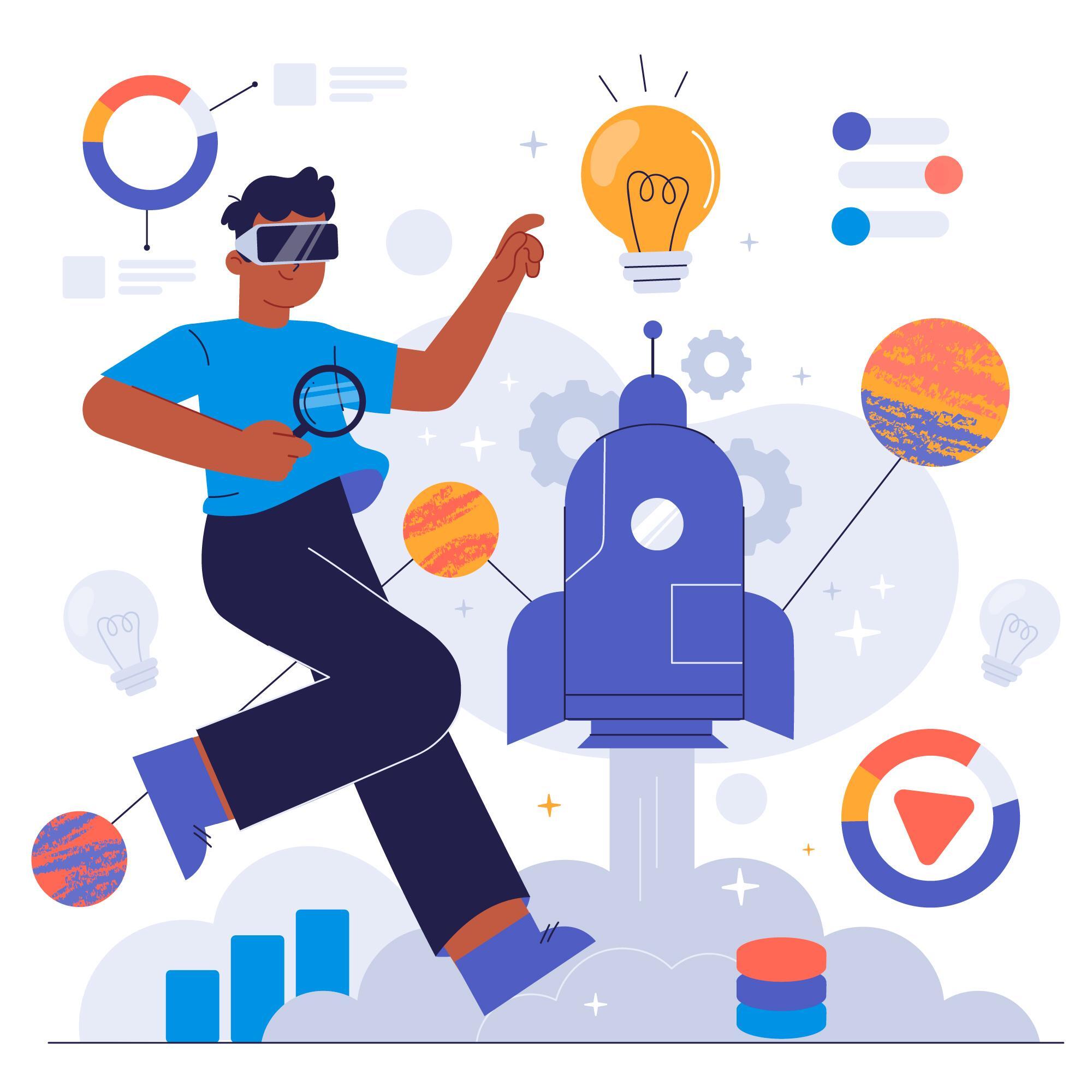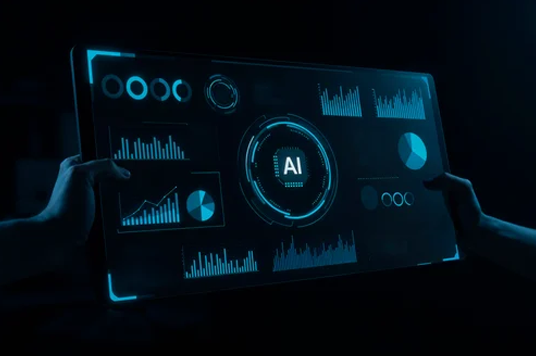The Software-as-a-Service (SaaS) model has revolutionized how businesses consume technology—shifting software from boxed products to cloud-based subscriptions. This shift democratized access, reduced costs, and enabled scalable innovation. However, the next wave of evolution is already here: the AI-first transformation.
Artificial Intelligence, once limited to backend automation or analytics dashboards, is now central to user experience, decision-making, and business strategy. We’re seeing a fundamental change in what users expect and how software must deliver value. The SaaS products of tomorrow won’t just be tools—they’ll be intelligent collaborators, adaptive assistants, and proactive advisors.
As SaaS leaders, you face a critical inflection point: stay conventional and compete on price and features—or go AI-first and compete on intelligence, user delight, and innovation. This guide will help you understand the AI-first mindset, why it matters, and how to implement it in a scalable, ethical, and customer-centric way.
What Does “AI-First” Really Mean?
The term "AI-first" is gaining popularity, but what does it actually mean? It’s often confused with “AI-enabled,” but the distinction is crucial. An AI-enabled product uses AI as a supporting feature—think of a chatbot or a recommendation engine added to an existing SaaS. An AI-first product, by contrast, is built from the ground up with AI as a core driver of value, usability, and growth.
AI-first isn't just about technology—it’s about rethinking your product philosophy, data strategy, user experience, and even your business model. It’s a shift from building reactive tools to building intelligent systems that learn, adapt, and evolve.
The Essence of AI-First
An AI-first SaaS product:
- Is designed around data and continuous learning loops.
- Leverages AI to anticipate user needs before they express them.
- Offers personalized, contextual, and predictive experiences.
- Embeds intelligence directly into decision-making workflows.
It’s the difference between a CRM that stores contacts and a CRM that scores leads, suggests follow-ups, and drafts emails. It's the difference between a support system that receives tickets and one that auto-resolves issues and identifies FAQs in real-time.
Being AI-first is about more than building a better product—it’s about redefining your value proposition. You're not just selling software anymore; you’re offering intelligent outcomes. That shift requires new architecture, new talent, and most importantly—a new mindset.
Why Shift from SaaS to AI-First?
The shift to AI-first isn't just a matter of keeping up with technology trends—it's a strategic response to changing customer behavior, competitive pressure, and business growth opportunities. As the market matures, product differentiation is no longer driven by features alone. The companies that are winning are those using AI to deliver superior user outcomes, operational efficiency, and strategic insights.
Here’s why every SaaS leader should seriously consider this shift:
1. Meeting Evolving User Expectations
Modern users are digital-first and AI-aware. They use Spotify, Netflix, and Gmail—platforms that personalize, predict, and automate interactions. They now expect the same intelligence from enterprise tools. Static interfaces, generic experiences, and rigid workflows no longer cut it. AI-first products meet users where they are and evolve with them—enhancing satisfaction and stickiness.
2. Staying Competitive in a Crowded Market
With thousands of SaaS products launched annually, competition is intense. AI-first capabilities help you stand out—not just with new features, but with smarter, faster, and more intuitive experiences. Startups that are AI-native have a head start. Established players must now catch up or risk losing relevance.
3. Driving Efficiency at Scale
AI can automate support, enhance onboarding, streamline workflows, and even assist in debugging code. This results in reduced overhead, faster turnaround, and scalable growth without linear cost increases. Teams can achieve more with less, thanks to AI-augmented productivity.
4. Unlocking New Revenue Streams
AI enables premium offerings that customers are willing to pay for—predictive analytics, AI-assisted content generation, intelligent reporting, and more. You can differentiate pricing tiers based on AI capabilities and create new monetization levers.
5. Leveraging Accessible AI Technologies
Today, anyone can access powerful models like GPT-4, Claude, or Mistral. Cloud providers offer ready-to-use AI APIs. The barrier to entry is lower than ever. With the right guidance, any SaaS business can begin embedding intelligence without reinventing the wheel.
Key Considerations Before Going AI-First
Before you dive into building AI-powered features, it’s critical to assess your readiness. Many companies jump into AI because it's trendy, only to realize they lack the data, team, or strategy to execute effectively. An AI-first journey demands alignment across technology, people, processes, and ethics.
Here are the essential areas you must evaluate:
1. Data Maturity & Accessibility
AI learns from data—poor data leads to poor models. Evaluate:
- Are you collecting meaningful user interaction data?
- Is it stored in a structured, queryable format?
- Do you have mechanisms to clean, label, and enrich it?
Without high-quality, accessible data, even the best algorithms will underperform. Build your data foundation before training models.
2. Cultural & Team Readiness
AI-first transformation requires a culture of experimentation, learning, and cross-functional collaboration. Your product managers must understand data. Your engineers should be comfortable with ML ops. Your design team should embrace intelligent UX patterns. Upskilling, hiring, or partnering may be necessary.
3. Compliance, Security & Ethics
AI brings ethical questions: fairness, privacy, explainability. Can users understand and trust AI decisions? Are you compliant with data protection laws like GDPR? Do you have internal policies on bias mitigation and transparency? These are not “nice to haves”—they’re business-critical.
4. Impact on User Experience
AI should simplify—not complicate. Will users understand the AI’s intent? Can they override or correct decisions? Are outputs explainable? Design AI interactions with empathy, ensuring they support—not replace—human judgment.
Step-by-Step Framework to Convert Your SaaS to AI-First
Transforming into an AI-first organization isn’t about doing everything at once. It’s about building incrementally and strategically. Here’s a proven framework we use with our clients to move from conventional SaaS to intelligent systems—one step at a time.
Step 1: Discover AI Opportunities Within Your Product
Start with user needs—not AI capabilities. Use analytics, customer interviews, and heatmaps to identify:
- Repetitive user actions
- High-friction workflows
- Data-heavy decisions
Brainstorm with your team: “If our product could think, what would it do differently?” Prioritize use cases based on value, complexity, and alignment with your core offering.
Step 2: Redesign Your Data Architecture
Your current data setup may not support AI. You’ll need:
- Event-driven logging (e.g., user clicks, actions)
- Real-time processing pipelines
- Centralized storage (data lake/warehouse)
Start by building a modern data stack—using tools like dbt, Snowflake, or BigQuery—to prepare for AI training and inference.
Step 3: Choose the Right AI Models
Not all use cases require large models. Classify needs as:
- Rule-based: Can be solved with logic.
- ML-based: Require training on historical data.
- LLM-based: Need contextual understanding (e.g., summarization, writing).
Use pre-trained models where possible. Fine-tune only when domain specificity is key. Always validate with a test group before wide deployment.
Step 4: Integrate AI Seamlessly Into the UX
Avoid jarring AI interfaces. Design intelligently:
- Use tooltips to explain AI actions.
- Allow users to accept or modify AI suggestions.
- Provide feedback buttons ("Was this useful?").
Test your UX with real users to refine trust, usability, and performance.
Step 5: Implement Continuous Feedback and Learning Loops
AI thrives on iteration. Set up:
- A/B testing to evaluate model impact.
- Human feedback to improve accuracy.
- Retraining cycles to adapt to user changes.
This builds a self-improving system, where your product gets smarter every week.
Common Pitfalls in AI-First Transformation (and How to Avoid Them)
AI-first transformation offers high rewards—but also serious risks. We've seen companies over-invest in hype, under-deliver on value, and create features that confuse rather than delight. Here are the most common pitfalls and how to avoid them:
1. Building Without User Validation
Some teams build AI features just because they can. Avoid this. Validate with real users—does the feature solve a problem? Would they pay for it? Does it enhance or distract from the core experience?
2. Ignoring Data Infrastructure
Great models need great data. Skipping this step is like trying to launch a rocket without fuel. Invest in robust, clean, observable pipelines before anything else.
3. Neglecting the Human Element
AI should amplify human decision-making, not replace it blindly. Allow manual overrides. Provide context. Be transparent about how predictions are made.
4. Failing to Monitor Models in Production
AI models degrade over time. User behavior shifts, data distributions change. Without monitoring and retraining, performance will drop. Implement MLOps early to ensure reliability.
Real-World Success Stories
Notion
Notion transformed from a note-taking app to a generative AI workspace by integrating features like automated summarization, content creation, and rewriting. Users can now brainstorm, structure ideas, and generate polished documents—all in one flow. The result? Massive user engagement and higher retention rates.
Gong
Gong uses AI to analyze sales calls, detect buying signals, and recommend next actions. Its AI listens, transcribes, and scores calls—helping reps close deals more effectively. This intelligence has made it indispensable for sales teams worldwide.
Intercom
Intercom’s AI chatbot “Fin” uses LLMs to resolve customer queries with high precision. Fin doesn’t just answer FAQs—it integrates with knowledge bases and understands natural language, improving support resolution rates and reducing ticket volume significantly.
Grammarly
Grammarly evolved from grammar correction to an AI-powered writing assistant. It now offers tone suggestions, inclusive language adjustments, and clarity rewrites—making it a must-have tool for professionals and students alike.
The Ideal Tech Stack for AI-First SaaS
Building an AI-first product requires a modern, modular tech stack—one that supports data agility, model deployment, and scalable UX. Here’s a look at what such a stack includes:
- Data Layer: Snowflake, BigQuery, dbt
- Processing: Apache Airflow, Kafka
- Modeling: PyTorch, TensorFlow, Hugging Face
- Inference: OpenAI API, Cohere, AWS SageMaker
- MLOps: MLflow, Kubeflow, Weights & Biases
- Deployment: Docker, Kubernetes
- Frontend: React with AI-ready design systems
Choose tools that integrate well, scale easily, and support experimentation.
How Classic Informatics Can Help You Lead the AI-First Transition
At Classic Informatics, we help SaaS businesses evolve—through engineering, AI, and data expertise. Whether you're just starting or scaling, we act as your innovation partner, not just a vendor.
We offer:
- AI Readiness Workshops: Understand your data, goals, and capabilities.
- Product Modernization: Re-architect legacy SaaS for AI compatibility.
- Model Development: From predictive analytics to LLMs, we build and integrate AI that works.
- UX Design for AI: Create trust-centric, user-friendly AI interfaces.
- MLOps and Governance: Ensure secure, scalable, and ethical AI deployment.
With a global engineering team and proven delivery model, we bring your AI vision to life—faster and smarter.
The Time for AI-First Is Now
The SaaS landscape is shifting—intelligence is becoming the new currency of value. The future belongs to products that don’t just work, but think, learn, and evolve.
Moving to AI-first isn’t just a technical upgrade; it’s a strategic transformation. It requires new ways of thinking, new capabilities, and new partnerships. But those who embrace it will unlock more than productivity—they’ll unlock possibilities.
At Classic Informatics, we’re here to guide you on this journey. From discovery to deployment, from vision to value—we help SaaS businesses build intelligent products that define the future.
Ready to Lead the Future with AI-First SaaS?
Let’s bring your vision to life. Contact Classic Informatics to explore how we can support your AI transformation. Book a free consultation or download our exclusive guide to building AI-first SaaS platforms.





















